The Well-Tempered Ear
Classical music: How did Baroque composer Telemann get overshadowed and why is he being rediscovered? Trevor Stephenson talks about his all-Telemann concerts this weekend
2 Comments
IF YOU LIKE A CERTAIN BLOG POST, PLEASE SPREAD THE WORD. FORWARD A LINK TO IT OR, SHARE IT or TAG IT (not just “Like” it) ON FACEBOOK. Performers can use the extra exposure to draw potential audience members to an event. And you might even attract new readers and subscribers to the blog.
By Jacob Stockinger
This weekend, the Madison Bach Musicians (MBM) will give two performances of a concert devoted exclusively to the music of Baroque composer Georg Philip Telemann (below).
The performances are: Saturday night, Oct. 5, at 8 p.m. in the Atrium Auditorium of the First Unitarian Society of Madison, 900 University Bay Drive, where MBM will be artists-in-residence this season; the second performance is on Sunday afternoon, Oct. 6, at 3:30 p.m. at the Holy Wisdom Monastery, 4200 County Road M, in Middleton.
Tickets are $35 in advance and are available at the Willy Street Coop East and West, and at Orange Tree Imports. Tickets at the door are $38 for the general public; $35 for seniors; and $10 for student rush tickets that go on sale 30 minutes before each lecture. The lectures take place 45 minutes before the performance, at 7:15 p.m. and 2:45 p.m, respectively.
Why focus on the music of Georg Philipp Telemann (1681-1767)?
Trevor Stephenson, the founder and director of the Madison Bach Musicians, talks about it in an email Q&A with The Ear:
Why does Telemann, who was so respected in his day, seem to get far less play, fewer performances and less mentioning today than his contemporaries Bach, Vivaldi and Handel?
Telemann was born in 1681 — three years after Vivaldi and four years before Bach and Handel. He was astonishingly prolific and it is estimated that he wrote more than Bach and Handel combined.
On top of this, he was very highly respected and was widely published and performed during his life. Remember, it was Telemann — not Bach — whom the Leipzig council wanted to hire for the music director position in 1723. But Telemann was enjoying his wonderful new post in Hamburg—a thriving port city — and was not about to go back to landlocked Leipzig where he had spent his student days.
At any rate, after the 18th century had passed and its music became somewhat marginalized, in the early 19th century it was Bach’s music, not Telemann’s, that suddenly re-emerged.
Bach’s tremendous emotional depth, contrapuntal mastery and ability to control large-scale forms in an almost heroic way spoke with greater urgency to the Romantic sensibility than did Telemann’s elegant craftsmanship. Indeed, 19th-century Bach scholars often mean-spiritedly used Telemann as a foil for Bach.
Telemann’s music nevertheless received a modicum of performances in the early 20th century, but in the 1980s and 1990s, as the Early Music movement really got rolling—and the level of period-instrument performance increased—it became apparent that Telemann’s music really was hot stuff!
Now his music is enjoying a wonderful and well-deserved revival.
What are the appealing and admirable qualities you see in Telemann’s music? Are there any drawbacks to his compositions?
Telemann had a wonderful sense of melodic invention — probably music’s analog to an artist’s ability to draw — and his tunes seem to flow out effortlessly. And although his output was opulent, he had an uncanny sense of form and how much weight – duration — any given musical scene could bear.
He also was a masterful musical polyglot, able to jump back and forth easily between Italian, French and German musical idioms; and like Bach, he was also adept at integrating them into a unified style—this integration of national styles was a frequently acknowledged goal of 18th-century composers.
Telemann’s limitations are apparent when he is juxtaposed with Handel, who could dramatically really take the roof off and who could also find the inner essence of the human voice, and Bach who, like Shakespeare, through a near alchemy of sound and meaning could consistently define and further what it means to be human.
How and why did you put this program together? What unifies it and what would you like the public to know about it?
Madison Bach Musicians’ concertmaster and assistant artistic director Kangwon Kim (below left with Emily Dupere) did the heavy lifting in putting together this wonderful program of Telemann’s chamber music. MBM will present three of Telemann’s programmatic or story works, one church cantata and three purely instrumental selections.
With narration and graphics, we’ll walk you through how he cleverly depicts scenes from Swift’s Gulliver’s Travels (1726, below), which had been in print only two years when Telemann wrote his topical Gulliver Suite in 1728. Telemann loved ludicrous irony, like the tiny Lilliputians dancing a heavy chaconne—which Telemann notates in a hilarious, confounding mass of 64th and 128th notes. And then there’s the Brobdingnagian giants doing their rendition of a light-footed gigue, rendered in loopy, cumbersome whole notes!
We’ll also present the marvelous Suite Burlesque based upon Cervantes’ Don Quixote (below): Quixote’s love for Dulcinea, his jousting with windmills, and how a crowd mocks Quixote’s faithful, world-weary servant Sancho Panza.
To top it off, guest artist mezzo-soprano Clara Osowski (below) will sing the droll and sweetly amusing cantata about the demise — brought about by the cat! — of a favorite and very artistic canary. Osowski will also sing the church cantata Weicht, ihr Sünden, bleibt dahinten (Yield, You Sins, and Stay Behind Me). Telemann wrote more than 1,000 church cantatas.
The concert includes non-programmatic works for string band: the dramatic and Corelli-esque Sonata à 6 in F minor for two violins, two violas, cello and continuo; and the sparkling Sinfonia Spirituosa (heard in the YouTube video at the bottom). I will also perform some fascinating Fantasy miniatures for solo harpsichord, and will give a pre-concert lecture at both events.
For more information about the program, the performers and tickets, go to: www.madisonbachmusicians.org
Tags: #18thCentury, #19thCentury, #20thCentury, #AntonioVivaldi, #ArcangeloCorelli, #AtriumAuditorium, #BaroqueComposer, #BaroqueContinuo, #BaroqueMusic, #BlogInterview, #BlogPost, #BlogPosting, #CelloMusic, #ChamberMusic, #ChristianChurch, #ClaraOsowski, #ClassicalMusician, #ContrapuntalMusic, #DonQuixote, #EarlyMusicMovement, #FacebookPost, #FacebookPosting, #FirstUnitarianSocietyofMadison, #GeorgeFridericHandel, #GeorgPhilippTelemann, #GuestArtist, #Gulliver'sTravels, #HamburgGermany, #HarpsichordMusic, #HeavyLifting, #HolyWisdomMonastery, #HotStuff, #HumanVoice, #InstrumentalMusic, #JohannSebastianBach, #JonathanSwift, #KangwonKim, #Large-scale, #LeipzigGermany, #MadisonBachMusicians, #Mezzo-sopranoSinger, #MigueldeCervantes, #MusicalStyle, #MusicDirector, #OrangeTreeImports, #PeriodInstrument, #PortCity, #Pre-concertLecture, #RomanticMusic, #SacredCantata, #SacredMusic, #SanchoPanza, #SaturdayNight, #SeniorCitizen, #StringMusic, #Sundayafternoon, #ViolaMusic, #ViolinMusic, #VocalMusic, #WholeNotes, #WilliamShakepseare, #WillyStreetCoop, #WillyStreetCoopEast, #WillyStreetCoopWest, 18th century, 19th century, 20th-century, ability, afternoon, alchemy, analog, analogue, Antonio Vivaldi, Arcangelo Corelli, artist, artist-in-residence, Atrium Auditorium, Bach, band, Baroque, behind, blog, Burlesque, Cantata, cellist, Cello, chaconne, Chamber music, Christian, Christianity, church, Clara Osowski, Classical music, classicalmusic, composer, Concert, concertmaster, contemporary, continuo, contrapuntal, control, Corelli, council, counterpoint, craftsmanship, crowd, cumbersome, dance, dancing, days, depth, devoted, Don Quixote, draw, Dulcinea, Early music, elegant, email, emotional, enjoy, exclusive, Facebook, faithful, fantasy, fascinating, First Unitarian Society of Madison, form, forward, French, Georg Philipp Telemann, George Frideric Handel, German, giant, giants, gigue, goal, guest artist, Gulliver's Travels, Hamburg, Handel, harpsichord, heavy lifting, heroic, hire, Holy Wisdom Monastery, hot stuff, human voice, idiom, instrumental, interview, invention, irony, Italian, Johann Sebastian Bach, Jonathan Swift, jousting, Kangwon Kim, landlocked, lecture, Leipzig, like, Lilliputian, link, loopy, Love, ludicrous, Madison Bach Musicians, marginalized, marvelous, mastery, me, mean-spirit, meaning, melodic, melody, mention, Mezzo-soprano, Middleton, Miguel de Cervantes, miniature, movement, Music, Music director, musical, musical style, national, night, notes, opulent, Orange Tree Imports, output, performance, performer, period-instrument, play, polyglot, port city, position, post, posting, programmatic, prolific, public, pure, Q&A, rediscover, respect, revival, Romantic, sacred cantata, sacred music, Sancho Panza, Saturday night, scene, scholar, senior, sense, sensibility, servant, Shakespeare, share, sins, solo, Sonata, Sound, story, string, Student, style, subscriber, Suite, Sunday, tag, tickets, tiny, tune, tunes, uncanny, unified, urgency, use, Viola, Violin, violinist, violist, Vivaldi, vocal music, weight, well-deserved, whole, whole notes, Willy Street Coop, windmill, Wisconsin, wonderfu, world-weary, yield
Classical music: This Friday night, the Wisconsin Union Theater presents a world-class Spanish string quartet and will also announce the special concerts to mark its centennial anniversary next season
2 Comments
IF YOU LIKE A CERTAIN BLOG POST, PLEASE SPREAD THE WORD. FORWARD A LINK TO IT OR, SHARE or TAG IT (not just “Like” it) ON FACEBOOK. Performers can use the extra exposure to draw potential audience members to an event.
By Jacob Stockinger
Think of it as a two-fer, and then some, at the Wisconsin Union Theater this Friday night, March 1.
The main event is the Madison debut of a world-class string quartet from Spain.
The other event is the announcement of the schedule for the Concert Series’ 2019-2020 season — the series’ 100th season.
The first event is the concert by Cuarteto Casals (below) at 7:30 p.m. in Shannon Hall.
Prices for the event are: the general public, $25-40; for Union members, $25-36; for UW faculty and staff members, $25-38; for young people, $20; and for UW-Madison students, $10. Tickets can be bought online, by phone at 608-265-ARTS (2787) or in person. See locations and hours here.
The program includes the String Quartet in C Major “The Bird,” Op. 33, No. 3, by Franz Joseph Haydn; the String Quartet No. 3 by Bela Bartok; selections from the Fantasies for String Quartet by Henry Purcell; and the String Quartet in G Minor, Op. 10, by Claude Debussy. (You can hear the Cuarteto Casals play a movement of a different Haydn string quartet in the YouTube video at the bottom.)
Cuarteto Casals was founded in 1997 at the Escuela Reina Sofia in Madrid. They are named after great 20th-century Catalan cellist Pau (Pablo) Casals (below). Members of the quartet are Vera Martinez Mehner and Abel Tomas, violins; Jonathan Brown, viola; and Arnau Tomas, cello.
The group achieved international recognition after winning First Prizes at the London and Brahms-Hamburg competitions. After receiving the prestigious Burletti-Buitoni Trust award designed to assist young musicians, the quartet acquired a matching set of Baroque and Classical period bows, used to distinguish between musical styles.
The year 2017 marked the 20th anniversary of the quartet, and also the start of a commemorative project: a six-concert series of the complete Beethoven quartets, accompanied by six commissioned works from great composers since the 17th century.
The quartet was selected as ambassadors of Catalan culture by the Generalitat of Catalunya, and accompanies the King of Spain on diplomatic visits.
It is the quartet-in-residence at the Spanish Royal Palace through 2020 and the quartet-in-residence at the Escola Superior de Musica de Catalunya in Barcelona.
Carol Carlson (below) will offer a free pre-concert lecture at 6 p.m. Carol holds both Doctor of Musical Arts and Master of Music degrees in violin performance from the UW-Madison.
Carlson dedicates herself to music education as co-founder, co-director and teacher of Music con Brio, a non-profit organization that provides affordable violin lessons and equipment for students at Emerson Elementary School in Madison. Music con Brio (below, in a photo by Scott Maurer) will perform on the stage of Shannon Hall from 7 to 7:20 p.m.
This program was supported in part by a grant from the Wisconsin Arts Board with funds from the State of Wisconsin and the National Endowment for the Arts. The media sponsor is WORT 89.9 FM.
Tags: #BarcelonaSpain, #BaroquePeriod, #BelaBartok, #BlogPost, #BlogPosting, #Burletti-BuitoniTrust, #CarolCarlson, #CatalanCulture, #ChamberMusic, #Classicalperiod, #ClaudeDebussy, #ConcertSeries, #CuartetoCasals, #DoctorofMusicalArts, #EmersonElementarySchool, #EscolaSuperiordeMusicadeCatalunya, #FacebookPost, #FacebookPosting, #FirstPrize, #FranzJosephHaydn, #HamburgGermany, #HenryPurcell, #JohannesBrahms, #KingofSpain, #LudwigVanBeethoven, #MadridSpain, #MasterofMusic, #MediaSponsor, #MusicalStyle, #MusicconBrio, #MusicEducation, #MusicLessons, #NationalEndowmentfortheArts, #NonprofitOrganization, #PabloCasals, #PauCasals, #Quartet-in-Residence, #ShannonHall, #SpanishRoyalPalace, #StateofWiscosnin, #StringQuartet, #UniversityofWisconsin-Madison, #WisconsinArtsBoard, #WisconsinUnionTheater, #WORT-FM89.9, #YoungPeople, #YouTubevideo, admission, affordable, ambassador, anniversary, announcement, Arts, audience, award, Barcelona, Baroque, Béla Bartók, Beethoven, bird, blog, bow, Brahms, Burletti-Buitoni Trust, Carol Carlson, Catalan culture, Catalonia, Cello, centennial, Chamber music, Classical, Classical music, Claude Debussy, Compact Disc, Competition, composer, Concert, concert series, Cuarteto Casals, culture, debut, degree, diplomatic, director, Doctor of Musical Arts, Emerson Elementary School, equipment, Escola Superior de Musica de Catalunya, event, Facebook, fantasies, fantasy, first prize, forward, founder, Franz Joseph Haydn, free, Hamburg, Henry Purcell, international, Jacob Stockinger, Johannes Brahms, King, lecture, lessons, like, link, London, Ludwig van Bethoven, Madison, Madrid, Master of Music, matching, media, member, Music, Music con Brio, Music education, musical style, National Endowment for the Arts, NEA, non-profit, organization, Pablo Casals, Pau Casals, performance, performer, period, pre-concert, prestigious, price, public, recognition, schedule, Season, series, set, Shannon Hall, share, Spain, Spanish Royal Palace, sponsor, State of Wisconsin, String quartet, Student, style, tag, Teacher, two-fer, United States, University of Wisconsin-Madison School of Music, University of Wisconsin–Madison, UW-Madison, Viola, Violin, Wisconsin, Wisconsin Arts Board, Wisconsin Union Theater, word, works-class, world-class, WORT, WORT-FM 89.9, young people, YouTube
- June 2024
- May 2024
- April 2024
- March 2024
- February 2024
- January 2024
- December 2023
- November 2023
- October 2023
- September 2023
- August 2023
- July 2023
- June 2023
- May 2023
- April 2023
- March 2023
- February 2023
- January 2023
- December 2022
- October 2022
- September 2022
- June 2022
- May 2022
- April 2022
- March 2022
- July 2021
- June 2021
- May 2021
- April 2021
- March 2021
- February 2021
- January 2021
- December 2020
- November 2020
- October 2020
- September 2020
- August 2020
- July 2020
- June 2020
- May 2020
- April 2020
- March 2020
- February 2020
- January 2020
- December 2019
- November 2019
- October 2019
- September 2019
- August 2019
- July 2019
- June 2019
- May 2019
- April 2019
- March 2019
- February 2019
- January 2019
- December 2018
- November 2018
- October 2018
- September 2018
- August 2018
- July 2018
- June 2018
- May 2018
- April 2018
- March 2018
- February 2018
- January 2018
- December 2017
- November 2017
- October 2017
- September 2017
- August 2017
- July 2017
- June 2017
- May 2017
- April 2017
- March 2017
- February 2017
- January 2017
- December 2016
- November 2016
- October 2016
- September 2016
- August 2016
- July 2016
- June 2016
- May 2016
- April 2016
- March 2016
- February 2016
- January 2016
- December 2015
- November 2015
- October 2015
- September 2015
- August 2015
- July 2015
- June 2015
- May 2015
- April 2015
- March 2015
- February 2015
- January 2015
- December 2014
- November 2014
- October 2014
- September 2014
- August 2014
- July 2014
- June 2014
- May 2014
- April 2014
- March 2014
- February 2014
- January 2014
- December 2013
- November 2013
- October 2013
- September 2013
- August 2013
- July 2013
- June 2013
- May 2013
- April 2013
- March 2013
- February 2013
- January 2013
- December 2012
- November 2012
- October 2012
- September 2012
- August 2012
- July 2012
- June 2012
- May 2012
- April 2012
- March 2012
- February 2012
- January 2012
- December 2011
- November 2011
- October 2011
- September 2011
- August 2011
- July 2011
- June 2011
- May 2011
- April 2011
- March 2011
- February 2011
- January 2011
- December 2010
- November 2010
- October 2010
- September 2010
- August 2010
- July 2010
- June 2010
- May 2010
- April 2010
- March 2010
- February 2010
- January 2010
- December 2009
- November 2009
- October 2009
- September 2009
- August 2009
Archives
- 2,495,338 hits
Blog Stats
Recent Comments
Tags
#BlogPost #BlogPosting #ChamberMusic #FacebookPost #FacebookPosting #MeadWitterSchoolofMusic #TheEar #UniversityofWisconsin-Madison #YouTubevideo Arts audience Bach Baroque Beethoven blog Cello Chamber music choral music Classical music Compact Disc composer Concert concerto conductor Early music Facebook forward Franz Schubert George Frideric Handel Jacob Stockinger Johannes Brahms Johann Sebastian Bach John DeMain like link Ludwig van Beethoven Madison Madison Opera Madison Symphony Orchestra Mead Witter School of Music Mozart Music New Music New York City NPR opera Orchestra Overture Center performer Pianist Piano post posting program share singer Sonata song soprano String quartet Student symphony tag The Ear United States University of Wisconsin-Madison School of Music University of Wisconsin–Madison Viola Violin vocal music Wisconsin Wisconsin Chamber Orchestra wisconsin public radio Wolfgang Amadeus Mozart YouTube
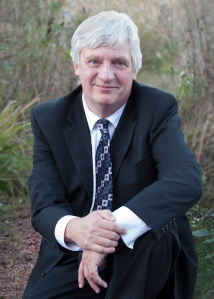
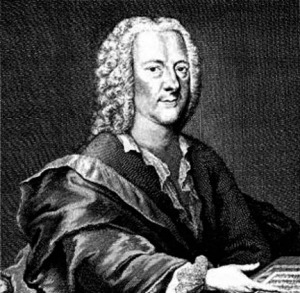
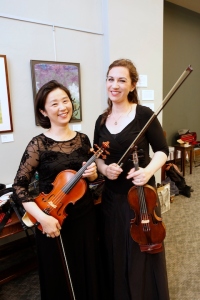


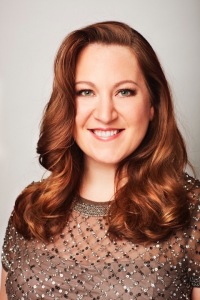
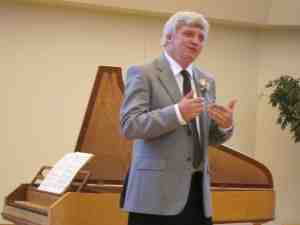




New York Times critics choose 10 online classical music concerts to stream in February, starting this Thursday
1 Comment
PLEASE HELP THE EAR. IF YOU LIKE A CERTAIN BLOG POST, SPREAD THE WORD. FORWARD A LINK TO IT OR, SHARE IT or TAG IT (not just “Like” it) ON FACEBOOK. Performers can use the extra exposure to draw potential audience members to an event. And you might even attract new readers and subscribers to the blog.
By Jacob Stockinger
As they have done for previous months during the coronavirus pandemic, the classical music critics for The New York Times have named their top 10 choices of online concerts to stream in February, which is also Black History Month, starting this Thursday, Feb. 4.
Also predictably, they focus on new music – including a world premiere — new conductors and new composers, although “new” doesn’t necessarily mean young in this context.
For example, the conductor Fabio Luisi (below) is well known to fans of Richard Wagner and the Metropolitan Opera. But he is new to the degree that just last season he became the new conductor of Dallas Symphony Orchestra and its digital concert series.
Similarly, the Finnish composer Magnus Lindberg (below top, in a photo by Saara Vuorjoki) and the American composer Caroline Shaw (below bottom, in a photo by Kait Moreno), who has won a Pulitzer Prize, have both developed reputations for reliable originality.
But chances are good that you have not yet heard of the young avant-garde cellist Mariel Roberts (below top) or the conductor Jonathon Heyward (below bottom).
Nor, The Ear suspects, have you probably heard the names and music of composers Angélica Negrón (below top), who uses found sounds and Tyshawn Sorey (below bottom). (You can sample Negrón’s unusual music in the YouTube video at the bottom.)
Of course, you will also find offerings by well-known figures such as the Berlin Philharmonic and its Kurt Weill festival; conductor Alan Gilbert; pianists Daniil Trifonov and Steven Osborne; violinist Leonidas Kavakos; and the JACK Quartet.
Tried-and-true composers are also featured, including music by Beethoven, Schnittke, Weber, Ravel and Prokofiev. But where are Bach, Vivaldi, Telemann and Handel? No one seems to like Baroque music.
Here is a link to the events with links and descriptions. All times are Eastern: https://www.nytimes.com/2021/01/28/arts/music/classical-music-streaming.html
Do you have other virtual and online concerts to suggest? Please leave details in the Comment sections.
Share this:
Tags: #African-AmericanComposer, #AlanGilbert, #AlfredSchnittke, #AmericanComposer, #AngelicaNegron, #AnthonyTommasini, #AntonioVivaldi, #BaroqueMusic, #BavarianStateOpera, #BerlinGermany, #BerlinPhilharmonic, #BertoltBrecht, #BlackComposer, #BlackHistory, #BlackHistoryMonth, #BlogPost, #BlogPosting, #CarlMariavonWeber, #CarolineShaw, #ChamberMusic, #ClassicalSymphony, #ConcertSeries, #ContemporaryMusic, #CoronavirusPandemic, #CountertenorSinger, #COVID-19, #DallasSymphonyOrchestra, #DallasTexas, #DaniilTrifonov, #DetroitMichigan, #DetroitSymphony, #DetroitSymphonyOrchestra, #EasternTime, #FabioLuisi, #FacebookPost, #FacebookPosting, #FranzJosephHaydn, #GeorgeFridericHandel, #GeorgPhilippTelemann, #HamburgGermany, #HannahKendall, #HelmutLachenmann, #JACKQuartet, #JacobStockinger, #JohannSebastianBach, #JohnHoliday, #JohnStorgards, #JonathonHeyward, #JoshuaBarone, #KurtWeill, #LatinoComposers, #LeonidasKavakos, #LivingComposer, #LudwigVanBeethoven, #MagnusLindberg, #MarielRoberts, #MauriceRavel, #MetropolitanOpera, #ModernMusic, #MotherGoose, #MotherGooseSuite, #MunichGermany, #MusicCritic, #NDRElbphilharmonieOrchestra, #NewMusic, #NewYorkTimes, #OnlineConcert, #OnlineFestival, #OperaMusic, #OrchestralMusic, #PercussionEnsemble, #PercussionMusic, #PianoConcerto, #PuertoRico, #PulitzerPrize, #RichardWagner, #RiseandFalloftheCotyofMahagonny, #SeattleSymphony, #SergeiProkofiev, #SethColterWalls, #SoPercussion, #SteveOsborn, #StringQuartet, #TheEar, #TheMet, #TheThreeopennyOpera, #TheVoice, #TVShow, #TyshawnSorey, #ViolinConcerto, #VirtualConcert, #VirtualFestival, #VocalMusic, #YouTubevideo, #ZacharyWoolfe, abolitionist, African American, African-Amercian, Alan Gilbert, Alfred Schnittke, America, American, Angelica Negron, Anthony Tommasini, Antonio Vivaldi, Arts, audience, avant-garde, Bach, Barone, Baroque, Baroque music, Bavaria, Bavarian State Opera, Beethoven, Berlin, Berlin Philharmonic, Bertolt Brecht, black, black composer, Black history, Black History Month, blog, Brecht, Carl Maria von Weber, Caroline Shaw, cellist, Cello, Chamber music, chance, Classical music, Classical Symphony, colorful, comment, composer, computer, Concert, concert series, concerto, conductor, contemporary, contemporary music, context, coronavirus, coronavirus pandemic, countertenor, critics, Dallas, Dallas Symphony Orchestra, Daniil Trifonov, dergee, description, details, Detroit, Detroit Symphony, Detroit Symphony Orchestra, digital, Eastern time, enchanting, Europe, European, event, Fabio Luisi, Facebook, Facebook post, Facebook posting, February, female, festival, Finland, Finnish, forward, Franz Joseph Haydn, Georg Philipp Telemann, George Frideric Handel, German, Germany, Gilbert, Hamburg, Handel, Hannah Kendall, Haydn, Helmut Lachenmann, Heyward, Hispanic, History, JACK Quartet, Jacob Stockinger, Johann Sebastian Bach, John Holiday, John Storgards, Jonathon Heyward, Joshua Barone, Kavakos, Kendall, Kurt Weill, Latina, Latino, Leonidas Kavakos, like, Lindberg, link, living composers, Ludwig van Beethoven, Luisi, Magnus Lindberg, Mariel Roberts, Maurice Ravel, Metropolitan Opera, modern music, Mother Goose, Mother Goose Suite, Munich, Music, music critic, NDR Elbphilharmonie Orchestra, Negrón, new, New Music, New York Times, online, opera, Orchestra, orchestral music, original, originality, Osborn, Overture, percussion, Percussion Ensemble, performers, Pianist, Piano, Piano concerto, post, posting, Prokofiev, Puerto Rico, Pulitzer Prize, Ravel, reliable, reputation, Richard Wager, Rise and Fall of the City of Mahagonny, Roberts, Romantic, Schnittke, Season, Seattle, Seattle Symphony, section, Sergei Prokofiev, series, Seth Colter Walls, share, Shaw, singer, Singing, So percussion, Sorey, Steven Osborn, Storgards, stream, String quartet, suffragist, suggestion, Suite, symphony, tag, Telemann, Texas, The Ear, the Met, The Threepenny Opera, The Voice, time, Tommasini, Trifonov, TV, TV show, Tyshawn Sorey, United States, Violin, Violin concerto, violinist, virtual, Vivaldi, vocal music, Wagner, Weber, Weill, win, women, Woolfe, young, YouTube, Zachary Woolfe